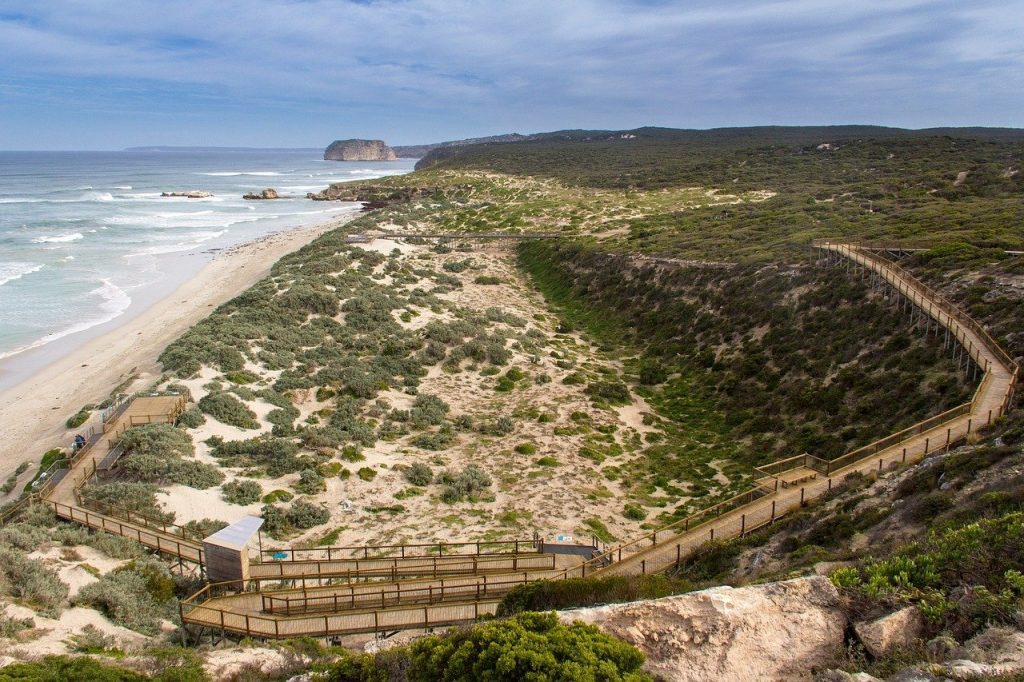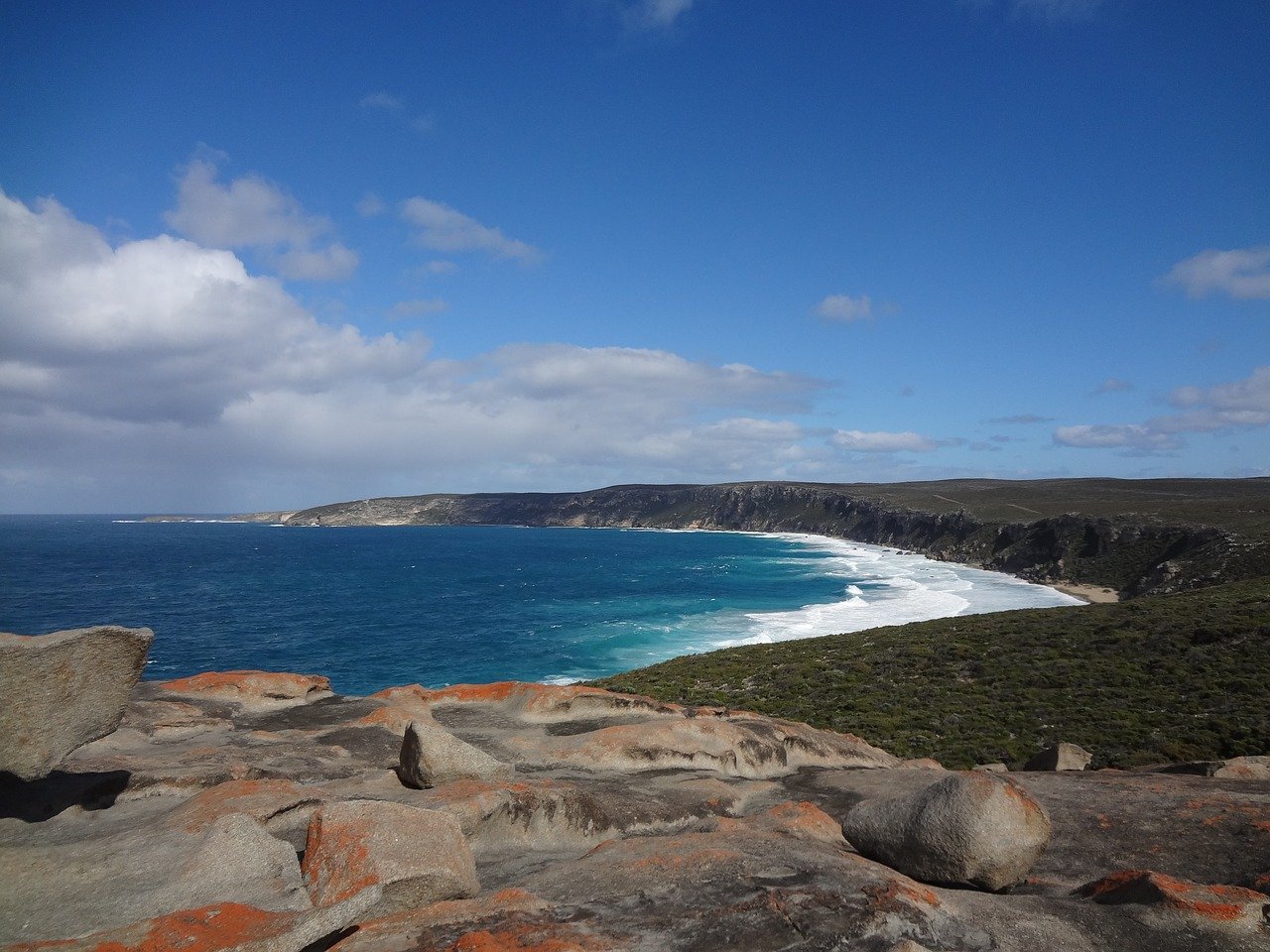It’s tough to describe just how glorious Kangaroo Island – a paradise just over 100 kilometres southwest of Adelaide – truly is.
As Australia’s third-largest island, Kangaroo Island boasts exactly what one might expect: 500-plus kilometres of golden coastline, rugged bush and glistening seas – all teeming with wildlife.
But there’s so much more- world-renowned cuisine paired with fine wines, cultural events and history, and, of course, some of the finest camping in the world.
In fact, camping is the best way to explore this ‘zoo without fences’, but, with almost four and a half thousand square kilometres of natural beauty to cover, you’ll want to earmark between three and seven days to make the most of it.
Can You Free Camp on Kangaroo Island?
The first thing to be aware of when it comes to Kangaroo Island camping is that free (or wild) camping isn’t really an option, because the island is largely a conservation park, and everyone wants to maintain its beauty for generations to come.
The good news is that there are a plethora of permit-only camping options – from caravan parks with great amenities, through to basic campgrounds where you’ll simply get space for your tent or vehicle and some stunning scenery as a backdrop to your outdoor adventure.
Can I Take A Caravan to Kangaroo Island?
Taking your caravan or camper trailer across to Kangaroo Island is actually pretty simple. From just $196 return, you can pre-book your home-away-from-home on The SeaLink ferry, making sure to specify the dimensions of it and your tow vehicle if applicable. There’s no size limit aboard but bear in mind that vans longer than five metres will put some places on the island off-limits.
Approved Car Loans in Adelaide offers low rate car and caravan finance if you need a new vehicle for your trip to Kangaroo Island.
How Much Does It Cost to Go to Kangaroo Island?
Ferry transport fees for you and your vehicles (including bikes and kayaks) vary based on size, so give them a call to book. You’ll be glad to have a set of wheels when you see how epic this wonderland is.
While camping is all about freedom and flexibility, a Kangaroo Island trip does require some forward-planning. The sooner you lock in permits, the sooner you’ll be able to switch to ‘island time’.
Now, onto some of the best places to stay!
Penneshaw
The ferry from the mainland is a comfortable 45 minutes, alighting at Penneshaw, the Island’s second-biggest town, a great place to start exploring – and where options to camp are plentiful.
Overlooking the white sands of beautiful Hog Bay, Kangaroo Island Seafront Holiday Park sits just 300 metres from the ferry terminal, and features powered and unpowered sites, a shower block, covered barbecues and laundry service. It’s wise to use the free Wi-Fi here to ensure you have all your permits going forward, as reception is pretty spotty elsewhere.
Travel just 30 minutes down the road and you’ll come to American River, a small village on a hill that enjoys a vista of the mainland. Here, you can sample the local delicacy – oysters — play in the bay and visit the birds of Pelican Lagoon Conservation Park.
The campground at this village is council-run, with room for about a dozen vans parked in unnumbered sites. Just note, there’s a road that runs alongside, so this spot’s not ideal for light sleepers – or those with little kids.
Another close-by option is Brown Beach campground, facing beautiful Nepean Bay. Set up camp at this secluded location for incredible beach views. There are toilets, a picnic area, and barbecues. It’s small – just 10 sites – but it’s sheltered and quiet.
No matter whether you favour the facilities of a Penneshaw caravan park, or prefer the back-to-basics of a beach camp, this town provides great opportunities to meet resident Little Penguins, picnic among the hidden artworks of the sculpture trail, or simply snorkel, fish, and sip local wines overlooking Hog Bay. You may even spot a dolphin!
Cape Gantheaume Conservation Park
It is spots like this stunning Wilderness Protection Area that make Kangaroo Island postcard-perfect.
Sitting on the South Coast, this area is a haven for rare and vulnerable wildlife, set against sweeping coastal views of the turquoise ocean and impressive cliffs, and dense, lush jungle that gives way to desert.
Nature walkers are spoilt for choice here, with the unmarked Cape Gantheaume Coastal Trek, Southern D’Estrees Bay walk and Murray Lagoon trails all promising challenging hikes and gorgeous views.
There are loads of options for camping around Cape Gantheaume, all of which welcome trailers, and run at about $16 a night per vehicle on average.
For seaside slumber, D’Estrees Bay offers four grounds: Tea Trees, Big Sand Dune, and Wheatons Beach Campgrounds are all facility-free, while Wreckers Beach Campground has toilets.
To bed down in the bush, Murray Lagoon campground offers water and toilets, but no other facilities.
Head 40 kilometres south-west from Cape Gantheaume, and you’ll arrive at Kingscote, Kangaroo Island’s largest town.
Kingscote
South Australia’s oldest European settlement, Kingscote’s historical highlights include Hope Cottage, Reeves Point, and the – 184-year-old, still fruit-bearing – Old Mulberry Tree.
The main Kingscote caravan park is a bushland ground with shady sites, a big camp kitchen and a licenced kiosk where you can stock up on ice and bait.
For something closer to nature, check out Duck Lagoon Campground, an inexpensive little inland spot perched on Cygnet River. Perfect for birdwatching, Duck Lagoon is a tranquil hideaway that’s home to koalas, black-fronted dotterel and masked lapwings.
This is one of the few sites on Kangaroo Island that you can’t book. There are no powered sites, however, you can enjoy a barbecue, unforgettable sunset, and peaceful creek-side sleep before you set off again.
Vivonne Bay
Given that there are over 10,000 of them, being voted as the best of all Aussie beaches is no small accolade, but it’s the one awarded to breath-taking Vivonne Bay, which boasts six-kilometres of incredible sand and sea, where you can surf, fish, and snorkel to your heart’s content.
From Vivonne, you can meet the majestic sea lions of Seal Bay, or venture a little further to Flinders Chase National Park, home of the Admirals Arch natural rock formations (where fur seals play), and the sparkling granite oddity that is Remarkable Rocks.



The caravan-accessible campground itself is well-furnished, with powered and unpowered sites, showers, toilets and barbecues. Vivonne Bay campground is pet friendly and has drinking water. There’s even a small shop close by. Hot showers are coin-operated, so bring lots of change!
Snelling Beach
Over the north side of the island, lies gorgeous Snellings Beach. Here, 660 metres of squeaky-clean sand faces sometimes hectic swells, beckoning hardy rock fisherman and daring surfers to the shore.
About 20 minutes’ drive from Snelling Beach sits Stokes Bay campground, which welcomes vans and trailers. Pets are welcome and there are toilets, but otherwise, the charm here is that it’s populated by wallabies and kangaroos, and backs onto the hidden gem that is Stokes Bay beach bay – plus, you can grab a great coffee at the nearby café.
Depending on how long you’ve managed to secure in this paradise, the North Coast of Kangaroo Island is worth spending a few days exploring. Here, rolling hills and pristine coastline evoke a sense of freedom and the hidden island beaches, where dolphins, seals and penguins romp, invigorate the soul.
No matter which of the Kangaroo Island campgrounds you choose, one thing’s certain – you’ll definitely be in the “I could live here” camp when your trip is over.
Photos really can’t do this gorgeous place justice; it simply must be explored to be believed. So, start planning, get packing, and get ready for the adventure of a lifetime.
If you’re looking to upgrade your caravan, camper, boat or 4WD, get a 30 second quick quote on finance with CreditOne – Australia’s best rated finance broker.



